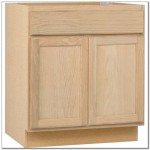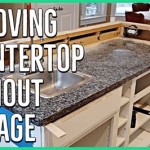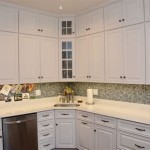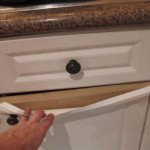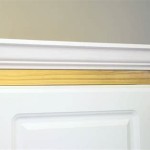Molding On Kitchen Cabinets: Enhancing Style and Utility
Molding, decorative strips of wood or other materials applied to surfaces, adds visual interest and architectural detail to kitchen cabinets. It can transform a plain cabinet face into a sophisticated statement piece, enhancing the overall aesthetic of the kitchen. Beyond its decorative purpose, molding can also serve practical functions, such as protecting cabinet edges from damage and concealing imperfections.
Types of Molding for Kitchen Cabinets
The world of cabinet molding offers a wide array of styles and materials to suit various preferences and design schemes. Common types include:
- Casing Molding: This type of molding frames the edges of cabinets, creating a clean and defined look. It is often used to create a traditional or farmhouse style.
- Crown Molding: Typically installed at the top of cabinets, crown molding adds a touch of elegance and sophistication. Its intricate designs and varying profiles can create a dramatic effect.
- Chair Rail Molding: Located at the lower portion of walls, chair rail molding protects walls from scuffs and bumps. It can also be used on cabinets for a subtle decorative touch.
- Beadboard Molding: This type of molding creates a classic and timeless look, reminiscent of traditional wooden paneling. It is often used to add texture and depth to cabinet doors.
- Applied Molding: Decorative strips like rope molding, cove molding, or ogee molding can be applied to cabinet faces to create unique patterns and designs.
Benefits of Molding on Kitchen Cabinets
Beyond enhancing the visual appeal of cabinets, molding offers several practical benefits:
- Edge Protection: Molding provides a protective layer around cabinet edges, minimizing scratches and dents from everyday use. This is especially beneficial in high-traffic areas like kitchens.
- Concealed Imperfections: Molding can effectively conceal imperfections in cabinet construction or minor damage. This can save the cost of replacing entire cabinet doors or panels.
- Enhanced Durability: Some types of molding, like chair rail molding, offer additional protection against water damage and spills. This is particularly important in kitchen environments where spills and splashes are common.
- Increased Storage Space: Molding can be used to create recessed areas on cabinet doors, providing additional storage space for items such as spices or cutlery.
- Enhanced Value: Adding molding to cabinets can increase the perceived value of the kitchen, making it more appealing to potential buyers.
Installation Considerations
When considering molding for kitchen cabinets, several factors need to be taken into account:
- Cabinet Type: The type of cabinetry will influence the type of molding that can be installed. For example, custom cabinets offer greater flexibility in molding options compared to stock cabinets.
- Design Style: The overall design style of the kitchen should guide the choice of molding. Traditional kitchens might prefer classic molding styles, while modern kitchens might opt for minimalist designs.
- Budget: Molding cost can vary significantly based on materials, complexity, and installation techniques.
- DIY or Professional Installation: Molding installation can be a DIY project, but professional expertise is recommended for complex designs or if specialized tools are needed.
Molding on kitchen cabinets adds a touch of sophistication and functionality, transforming plain surfaces into elegant design elements. By considering the various types, benefits, and installation factors, homeowners can choose the perfect molding options to enhance the aesthetics and practicality of their kitchens.

10 Types Of Kitchen Cabinet Molding For Your Home

Decorative Molding Timberlake Cabinetry

Adding Moldings To Your Kitchen Cabinets Remodelando La Casa

7 Types Of Cabinet Moldings And How To Use Them Properly

3 Ways To Enhance Your Kitchen With Crown Molding

9 Molding Types To Raise The Bar On Your Kitchen Cabinetry

Adding Crown Molding To Kitchen Cabinets Young House Love

Crown Molding For Kitchen Cabinets Fine Homebuilding

Diy Kitchen Cabinet Upgrade With Paint And Crown Molding

Straight Molding On Top Of Cabinets Kitchen Cabinet Crown Upper
Related Posts

